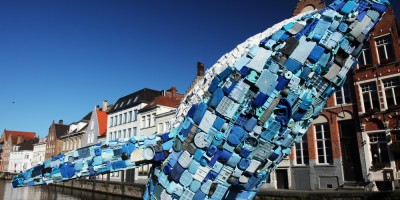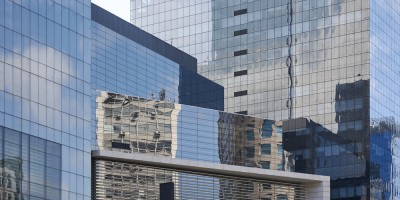-
罗姆人
Transfer of a football club – debts and regulations
2 10 月 2018
- 体育
It is not a secret that the football players are not always paid according to their contracts. Actually, the number of football club cases with overdue debts, requesting complex solutions in order to prevent and diminish the abusive behaviours towards the players is increasing yearly. The licensing system put in place by UEFA under the 3 years rule for participating in European Competitions or the recent FIFA and FIFPRO landmark agreement (www.fifpro.org/news/fifa-and-fifpro-sign-landmark-agreement) aiming to introduce new provisions to avoid the abusive conduct of the football clubs in such situation proves the extent of the phenomenon, as well as the preoccupation of the responsible bodies to solve the matter in question.
It is also not a secret there are areas where the case of overdue payables to players are more frequent and the solutions found by the clubs and the persons that are behind the clubs to avoid payments are complex and they push to the limit the fair play rules in football.
We will present in this article a particular way used by the football clubs (especially by those from the Eastern Europe) to avoid not only to cover the debts due to the players but also to elude the licensing system, and we will examine possible solutions to tackle and sanction such behaviours.
There are cases when a football club accumulates debts and takes the decision that such debts – that are especially due to the players – will not be paid, irrespectively of grounds of such decision. In such cases, the club is declared insolvent and the debts are falling under the insolvency law procedures; sometimes the football club is closed or, even if it obtains some new financing, usually is downgraded and it starts from scratch in a lower division. If it is closed, its main assets could be taken over by a new group of investors which could even decide to set up a new club; the new club also begins its activity in a lower division, without having the right to participate in European Competitions for at least 3 years.
Nonetheless, there is also a different approach that is used by some clubs, in order to avoid covering its debts, and in the same time to maintain the control over the valuable assets and thus “to dribble” the licensing regulations. This involves the transfer of the main assets – usually before the club enters the closing process (under insolvency procedure or voluntarily) – to another active football club and which generally is a “farm club”.
When the football club is closed, the affiliation to the local Federation and FIFA ceases, and consequently all the litigations pending in front of the competent bodies in field such DRC, TAS cease. The direct consequence is that the players are not paid and they do not have any chance to obtain the due amounts. In the same time, the farm club (de facto the successor) – which uses the same colours and the same stadium, also the same administrative staff and the same sponsors of the former one, does not have debts has, at least from the theoretical point of view, the capacity to play in the European competitions. Moreover, the farm club usually acts in the second division and has real chances to promote soon in the first division, avoiding starting from a lower division.
However, it is easy to conclude that, in this way, the sports rules, the rights of the players and competitors, as well as the integrity of a fair competition, are all infringed.
How could one determine whether a de facto business transfer of a footbal club took place?
Generally, football clubs try to hide the transfer of business by splitting the operations and therefore the affected parties have to connect the dots in order to prove that a “de facto” business transfer took place.
In order to address the above question, we checked the typical cases, outside the sports field, to assess criteria in order to determine if a transfer of business takes place or not. Thus, we could easily find some answers by analysing the TUPE/Transfer of Undertakings (Protection of Employment – Council Directive 2001/23/EC) case law and the VAT directive (Council Directive 2006/112/EC) case law of the European courts; in our view, TUPE cases are more relevant due to the fact that in most of them the parties involved (transferor and the successor) tried to avoid the rights of the employees by using different methods.
In a typical business transfer case, the main elements considered are:
- the type of undertaking in question;
- the transfer of the assets (tangible and intangible);
- personnel;
- the similarity of the activities.
In a football business, we believe that the most valuable assets of the football club should be considered: the supporter base (that comes due to record history, results, tradition etc.); the football team value; the use of stadium; the organization structure, including available financing.
Therefore, we consider that some actions (such as the ones listed below) could lead to the conclusion that a transfer of business takes place by relating to: (a) change of the transferor’s financial situation; (b) transfer of the players (not necessarily the first team but players of other level, such as juniors); in this respect, it could be verified also if the rights of the former players were transferred or abandoned by the transferor to the successor; (c) facilities of the stadium – if the stadium is the property of the transferor, it could be assessed whether it was given up to the successor – right of the first use, rent right and rates, marketing rights, etc.; (d) announcement/ public actions addressed to supporters by which the new team claims that it is the successor of the former, marketing materials addressed to sponsors and media claiming the same; (e) increase of the successor’s budget where the same financial support was provided to the transferor (by municipalities, companies under the control of central or local administration, former shareholders etc.); (f) increase of the personnel chart and/or changing the structure of successor (number of administrative staff; team staff etc.); (g) taking over (by the successor) of specific contracts, supporters’ data base, marketing tools used previously by the transferor; (h) taking over the assets (specific training facilities,; (i) making financial agreements, giving incentives to the key people or companies in connection with the successor; (j) moving the key people from the transferor to successor; (k) how control over the transferor and successor is exercised de jure and de facto.
Mention should be also made that we consider that such analysis could cover a past period in order to determine if the transferor was bankrupted or abandoned to the benefit of the successor, as such operations are prepared in advance by the transferor in order to look like a natural process and not as a business transfer.
At this point, we believe that it is relevant to point out also that the Court of Arbitration for Sport („CAS”) dealt with certain cases when „the facto” business transfers were performed.
Thus, in one case, CAS considered that “a sporting entity identifiable by itself is that, as a general rule, transcends the legal entities which operate it” (Par. 139 of the Decision CAS 2013/A/3425 available on http://www.tas-cas.org/en/index.html). The full reasoning of the Sole Arbitrator in this particular CAS case was the following: “The Sole Arbitrator highlights that the decisions that had dealt with the question of the succession of a sporting club in front of the CAS (CAS 2007/A/1355; TAS 2011/A/2614; TAS 2011/A/2646; TAS 2012/A/2778) and in front of FIFA’s decision-making bodies (…), have established that, on the one side, a club is a sporting entity identifiable by itself that, as a general rule, transcends the legal entities which operate it. Thus, the obligations acquired by any of the entities in charge of its administration in relation with its activity must be respected; and on the other side, that the identity of a club is constituted by elements such as its name, colours, fans, history, sporting achievements, shield, trophies, stadium, roster of players, historic figures, etc. that allow it to distinguish from all the other clubs. Hence, the prevalence of the continuity and permanence in time of the sporting institution in front of the entity that manages it has been recognised, even when dealing with the change of management companies completely different from themselves” (original text in Spanish).
In another case, CAS ruled that the „Old Club” and the „New Club” shall be considered as the same football club, irrespective of any change of management or legal entity which operates the club as a consequence of: (i) both teams competed in the first division championship under the name “U___”; (ii) the logo and colours of both team remained identical; (iii) both the „Old Club” and the „New Club” are registered at the same address; (iv) both the „Old Club” and the „New Club” have the same managing director.
Which are the practical consequences if it is deemed that a de facto transfer of activity (business) of a footbal club took place?
For answering this question, we checked some of the objectives listed by FIFA in its regulations and we took note of the following:
- to control each type of football association, by taking appropriate steps in order to prevent infringements of the Statutes, regulations or decisions or of the Laws of the Game;
- to promote integrity, ethics and fair play with a view to prevent all methods or practices, such as corruption, doping or match manipulation, which might jeopardize the integrity of matches, competitions, players, officials and member associations or give rise to abuse from the football association.
It is obvious that any behaviour for transferring the activity to a new club for reasons like avoiding debts and licensing system could not be considered as being in line with the above objectives and therefore it represents a clear and direct threaten to the same. By taking the necessary measures to prevent, expose and sanction all the parties involved (including national federations that allow or are simply passive with such ways of doing business), we believe that the integrity, ethics and fair play are continuously persevered and guarded.
Under such circumstances, at least the following practical consequences should be automatically acknowledged when a transfer of activity (business) of a football club is performed:
- All the players’ debts that are due by the transferor to be automatically due by the successor;
- All the players’ claims that were stopped, due to disaffiliations of the successor, to be raised against the successor;
- The statute of limitation to start when the creditor/s finds out about or should find out about the fraudulent act of the transferor;
- The successor should be automatically considered as a new club, under the licensing regulation.
Instead of conclusions
There will always be a tendency to avoid the regulations and to use the complex binominal of civil regulations and sports regulations for taking advantages of players and other competitors.
Sometimes, the persons behind the clubs use their power against the players and in no case to the benefit of the game, but for their own benefit. Most of the time, the players are the weak part and the relation could not be balanced, as the players that are affected by the overdue debts are, of course, in rare cases prominent football players that have the resources and ways to fight back. That is why the balance should be restored by going back to the aim of the rules in the football field and that is to protect the integrity of the game and its main actors, namely the players. The system should always act proactively for protecting the players’ interest when there is any attempt or actual fraud of aim and/or rules and by that we mean that it should be mandatory to make all efforts to confront and correct such behaviours by using all legal methods and leverages.
The author of this post is Dan Mihai.
The eSports sector is growing rapidly as illustrated by the following figures:
In 2017, the eSports economy grew to US-$696 million, a year-on-year growth of 41.3%.
Brands invested $517 million in 2017, which is expected to double by 2020.
Worldwide, the global eSports audience reached 385 million in 2017, with 191 million regular viewers.
(cf. https://newzoo.com/insights/trend-reports/global-esports-market-report-2017-light/)
North America continues to be the largest eSports market with revenues of US-$257 million. There is also continual development of eSports in Germany, however. The professional soccer teams of VfL Wolfsburg and FC Schalke 04 have their own eSports teams (http://www.gameswirtschaft.de/sport/esports-fussball-bundesliga/), and the German eSports Federation Deutschland has recently been founded, with the Federal Association of Interactive Entertainment Software (BIU) as a founding member (http://www.horizont.net/marketing/nachrichten/ESBD-E-Sport-Bund-Deutschland-geht-an-den-Start-162957).
In areas where such a lot of money can be made, legal obstacles are never far away. Here, they comprise a wide range of all kinds of different topics.
The initial focus is on copyrights and ancillary copyrights. Soccer stadiums, buildings, and avatars may enjoy copyright protection just as much as the computer program on which the games are based. Another item of discussion is whether eAthletes are to be classified as “performing artists” in accordance with Section 73 German Copyright Act. In addition, the question arises as to who enjoys ancillary copyrights under Section 81 Copyright Act as organizer of eSports events and whether such organizers have the same domiciliary rights as the organizers of a regular sports event.
In terms of trademark and design law, it will have to be discussed to what extent products and brand images represent infringements of the Trademark Act and the Design Act. In the case of brands and trademarks in particular, the question will be to what extent they are design objects or indications of origin.
Finally, there will also be regulatory issues that need to be observed. In addition to the use of cheatbots and doping substances, the main focus will be on the protection of minors and the Interstate Broadcasting Treaty with its advertising restrictions.
In conclusion, one suggestion: keep an eye on the eSports movement! Companies that want to stay ahead of the curve, should deal with the aforementioned issues and all further questions in timely manner.
The author of this post is Ilja Czernik.
Germany – eSports gaining ever more significance
13 12 月 2017
-
德国
- 知识产权
- 传媒
- 体育
It is not a secret that the football players are not always paid according to their contracts. Actually, the number of football club cases with overdue debts, requesting complex solutions in order to prevent and diminish the abusive behaviours towards the players is increasing yearly. The licensing system put in place by UEFA under the 3 years rule for participating in European Competitions or the recent FIFA and FIFPRO landmark agreement (www.fifpro.org/news/fifa-and-fifpro-sign-landmark-agreement) aiming to introduce new provisions to avoid the abusive conduct of the football clubs in such situation proves the extent of the phenomenon, as well as the preoccupation of the responsible bodies to solve the matter in question.
It is also not a secret there are areas where the case of overdue payables to players are more frequent and the solutions found by the clubs and the persons that are behind the clubs to avoid payments are complex and they push to the limit the fair play rules in football.
We will present in this article a particular way used by the football clubs (especially by those from the Eastern Europe) to avoid not only to cover the debts due to the players but also to elude the licensing system, and we will examine possible solutions to tackle and sanction such behaviours.
There are cases when a football club accumulates debts and takes the decision that such debts – that are especially due to the players – will not be paid, irrespectively of grounds of such decision. In such cases, the club is declared insolvent and the debts are falling under the insolvency law procedures; sometimes the football club is closed or, even if it obtains some new financing, usually is downgraded and it starts from scratch in a lower division. If it is closed, its main assets could be taken over by a new group of investors which could even decide to set up a new club; the new club also begins its activity in a lower division, without having the right to participate in European Competitions for at least 3 years.
Nonetheless, there is also a different approach that is used by some clubs, in order to avoid covering its debts, and in the same time to maintain the control over the valuable assets and thus “to dribble” the licensing regulations. This involves the transfer of the main assets – usually before the club enters the closing process (under insolvency procedure or voluntarily) – to another active football club and which generally is a “farm club”.
When the football club is closed, the affiliation to the local Federation and FIFA ceases, and consequently all the litigations pending in front of the competent bodies in field such DRC, TAS cease. The direct consequence is that the players are not paid and they do not have any chance to obtain the due amounts. In the same time, the farm club (de facto the successor) – which uses the same colours and the same stadium, also the same administrative staff and the same sponsors of the former one, does not have debts has, at least from the theoretical point of view, the capacity to play in the European competitions. Moreover, the farm club usually acts in the second division and has real chances to promote soon in the first division, avoiding starting from a lower division.
However, it is easy to conclude that, in this way, the sports rules, the rights of the players and competitors, as well as the integrity of a fair competition, are all infringed.
How could one determine whether a de facto business transfer of a footbal club took place?
Generally, football clubs try to hide the transfer of business by splitting the operations and therefore the affected parties have to connect the dots in order to prove that a “de facto” business transfer took place.
In order to address the above question, we checked the typical cases, outside the sports field, to assess criteria in order to determine if a transfer of business takes place or not. Thus, we could easily find some answers by analysing the TUPE/Transfer of Undertakings (Protection of Employment – Council Directive 2001/23/EC) case law and the VAT directive (Council Directive 2006/112/EC) case law of the European courts; in our view, TUPE cases are more relevant due to the fact that in most of them the parties involved (transferor and the successor) tried to avoid the rights of the employees by using different methods.
In a typical business transfer case, the main elements considered are:
- the type of undertaking in question;
- the transfer of the assets (tangible and intangible);
- personnel;
- the similarity of the activities.
In a football business, we believe that the most valuable assets of the football club should be considered: the supporter base (that comes due to record history, results, tradition etc.); the football team value; the use of stadium; the organization structure, including available financing.
Therefore, we consider that some actions (such as the ones listed below) could lead to the conclusion that a transfer of business takes place by relating to: (a) change of the transferor’s financial situation; (b) transfer of the players (not necessarily the first team but players of other level, such as juniors); in this respect, it could be verified also if the rights of the former players were transferred or abandoned by the transferor to the successor; (c) facilities of the stadium – if the stadium is the property of the transferor, it could be assessed whether it was given up to the successor – right of the first use, rent right and rates, marketing rights, etc.; (d) announcement/ public actions addressed to supporters by which the new team claims that it is the successor of the former, marketing materials addressed to sponsors and media claiming the same; (e) increase of the successor’s budget where the same financial support was provided to the transferor (by municipalities, companies under the control of central or local administration, former shareholders etc.); (f) increase of the personnel chart and/or changing the structure of successor (number of administrative staff; team staff etc.); (g) taking over (by the successor) of specific contracts, supporters’ data base, marketing tools used previously by the transferor; (h) taking over the assets (specific training facilities,; (i) making financial agreements, giving incentives to the key people or companies in connection with the successor; (j) moving the key people from the transferor to successor; (k) how control over the transferor and successor is exercised de jure and de facto.
Mention should be also made that we consider that such analysis could cover a past period in order to determine if the transferor was bankrupted or abandoned to the benefit of the successor, as such operations are prepared in advance by the transferor in order to look like a natural process and not as a business transfer.
At this point, we believe that it is relevant to point out also that the Court of Arbitration for Sport („CAS”) dealt with certain cases when „the facto” business transfers were performed.
Thus, in one case, CAS considered that “a sporting entity identifiable by itself is that, as a general rule, transcends the legal entities which operate it” (Par. 139 of the Decision CAS 2013/A/3425 available on http://www.tas-cas.org/en/index.html). The full reasoning of the Sole Arbitrator in this particular CAS case was the following: “The Sole Arbitrator highlights that the decisions that had dealt with the question of the succession of a sporting club in front of the CAS (CAS 2007/A/1355; TAS 2011/A/2614; TAS 2011/A/2646; TAS 2012/A/2778) and in front of FIFA’s decision-making bodies (…), have established that, on the one side, a club is a sporting entity identifiable by itself that, as a general rule, transcends the legal entities which operate it. Thus, the obligations acquired by any of the entities in charge of its administration in relation with its activity must be respected; and on the other side, that the identity of a club is constituted by elements such as its name, colours, fans, history, sporting achievements, shield, trophies, stadium, roster of players, historic figures, etc. that allow it to distinguish from all the other clubs. Hence, the prevalence of the continuity and permanence in time of the sporting institution in front of the entity that manages it has been recognised, even when dealing with the change of management companies completely different from themselves” (original text in Spanish).
In another case, CAS ruled that the „Old Club” and the „New Club” shall be considered as the same football club, irrespective of any change of management or legal entity which operates the club as a consequence of: (i) both teams competed in the first division championship under the name “U___”; (ii) the logo and colours of both team remained identical; (iii) both the „Old Club” and the „New Club” are registered at the same address; (iv) both the „Old Club” and the „New Club” have the same managing director.
Which are the practical consequences if it is deemed that a de facto transfer of activity (business) of a footbal club took place?
For answering this question, we checked some of the objectives listed by FIFA in its regulations and we took note of the following:
- to control each type of football association, by taking appropriate steps in order to prevent infringements of the Statutes, regulations or decisions or of the Laws of the Game;
- to promote integrity, ethics and fair play with a view to prevent all methods or practices, such as corruption, doping or match manipulation, which might jeopardize the integrity of matches, competitions, players, officials and member associations or give rise to abuse from the football association.
It is obvious that any behaviour for transferring the activity to a new club for reasons like avoiding debts and licensing system could not be considered as being in line with the above objectives and therefore it represents a clear and direct threaten to the same. By taking the necessary measures to prevent, expose and sanction all the parties involved (including national federations that allow or are simply passive with such ways of doing business), we believe that the integrity, ethics and fair play are continuously persevered and guarded.
Under such circumstances, at least the following practical consequences should be automatically acknowledged when a transfer of activity (business) of a football club is performed:
- All the players’ debts that are due by the transferor to be automatically due by the successor;
- All the players’ claims that were stopped, due to disaffiliations of the successor, to be raised against the successor;
- The statute of limitation to start when the creditor/s finds out about or should find out about the fraudulent act of the transferor;
- The successor should be automatically considered as a new club, under the licensing regulation.
Instead of conclusions
There will always be a tendency to avoid the regulations and to use the complex binominal of civil regulations and sports regulations for taking advantages of players and other competitors.
Sometimes, the persons behind the clubs use their power against the players and in no case to the benefit of the game, but for their own benefit. Most of the time, the players are the weak part and the relation could not be balanced, as the players that are affected by the overdue debts are, of course, in rare cases prominent football players that have the resources and ways to fight back. That is why the balance should be restored by going back to the aim of the rules in the football field and that is to protect the integrity of the game and its main actors, namely the players. The system should always act proactively for protecting the players’ interest when there is any attempt or actual fraud of aim and/or rules and by that we mean that it should be mandatory to make all efforts to confront and correct such behaviours by using all legal methods and leverages.
The author of this post is Dan Mihai.
The eSports sector is growing rapidly as illustrated by the following figures:
In 2017, the eSports economy grew to US-$696 million, a year-on-year growth of 41.3%.
Brands invested $517 million in 2017, which is expected to double by 2020.
Worldwide, the global eSports audience reached 385 million in 2017, with 191 million regular viewers.
(cf. https://newzoo.com/insights/trend-reports/global-esports-market-report-2017-light/)
North America continues to be the largest eSports market with revenues of US-$257 million. There is also continual development of eSports in Germany, however. The professional soccer teams of VfL Wolfsburg and FC Schalke 04 have their own eSports teams (http://www.gameswirtschaft.de/sport/esports-fussball-bundesliga/), and the German eSports Federation Deutschland has recently been founded, with the Federal Association of Interactive Entertainment Software (BIU) as a founding member (http://www.horizont.net/marketing/nachrichten/ESBD-E-Sport-Bund-Deutschland-geht-an-den-Start-162957).
In areas where such a lot of money can be made, legal obstacles are never far away. Here, they comprise a wide range of all kinds of different topics.
The initial focus is on copyrights and ancillary copyrights. Soccer stadiums, buildings, and avatars may enjoy copyright protection just as much as the computer program on which the games are based. Another item of discussion is whether eAthletes are to be classified as “performing artists” in accordance with Section 73 German Copyright Act. In addition, the question arises as to who enjoys ancillary copyrights under Section 81 Copyright Act as organizer of eSports events and whether such organizers have the same domiciliary rights as the organizers of a regular sports event.
In terms of trademark and design law, it will have to be discussed to what extent products and brand images represent infringements of the Trademark Act and the Design Act. In the case of brands and trademarks in particular, the question will be to what extent they are design objects or indications of origin.
Finally, there will also be regulatory issues that need to be observed. In addition to the use of cheatbots and doping substances, the main focus will be on the protection of minors and the Interstate Broadcasting Treaty with its advertising restrictions.
In conclusion, one suggestion: keep an eye on the eSports movement! Companies that want to stay ahead of the curve, should deal with the aforementioned issues and all further questions in timely manner.
The author of this post is Ilja Czernik.


















